Recently one of my photos was published in a course book made by the leading Dutch photography magazine called Zoom. The course book is about light in the darkness and how to do night photography. It's really nice they published my photo but I would not call myself an expert on the topic of northern lights. Simply because I haven't had much opportunity to practice. But let me explain what I've learned.
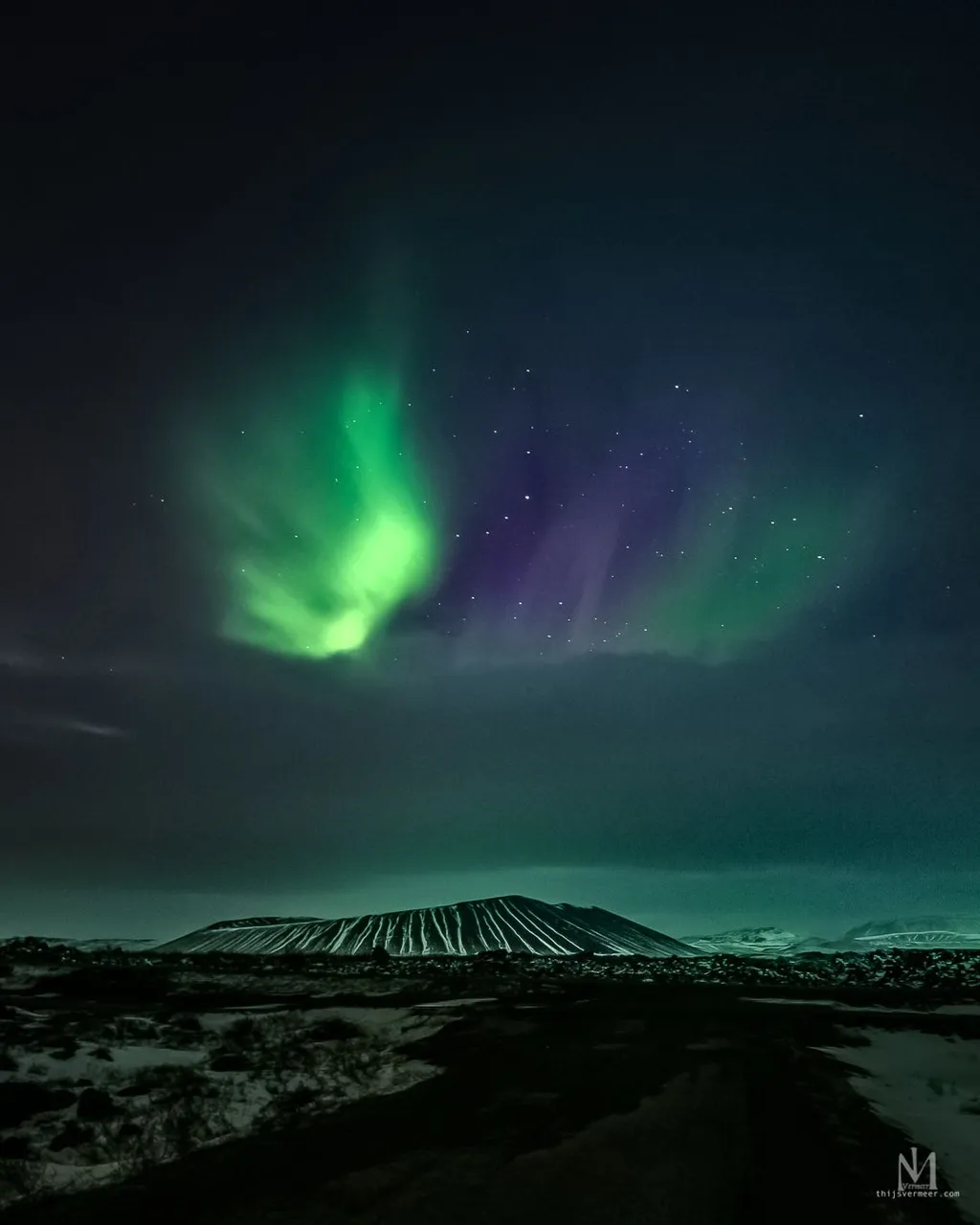
The photo published by Zoom.
Setup
Northern lights are amazing to watch but difficult to photograph. Since it's dark outside you can not use auto focus, your camera is probably unable to find a subject to focus on. You have to focus manually by putting your lens in infinity mode and maybe adjust a little until you have the stars in focus.
Now open the diaphragm as wide as possible to allow as much light as possible into the camera. More expensive lenses have wider diaphragm openings, like F2.8 or less. And since you're capturing the skies, a wide angle lens comes in handy.
Depending on the age of your camera you should dial in a high ISO setting, like 6400 or maybe more. Take a test shot with a shutter speed of 10 sec. If the result is too light, lower the ISO and try again. If it's to dark, increase the ISO and try again. Of course you could also adjust the shutter speed to increase of decrease the amount of light, but ideal you would like to be in the 10sec range and find out what the best ISO setting is for that range. Why?
Well that's the most tricky part of northern lights photography. Northern lights move...
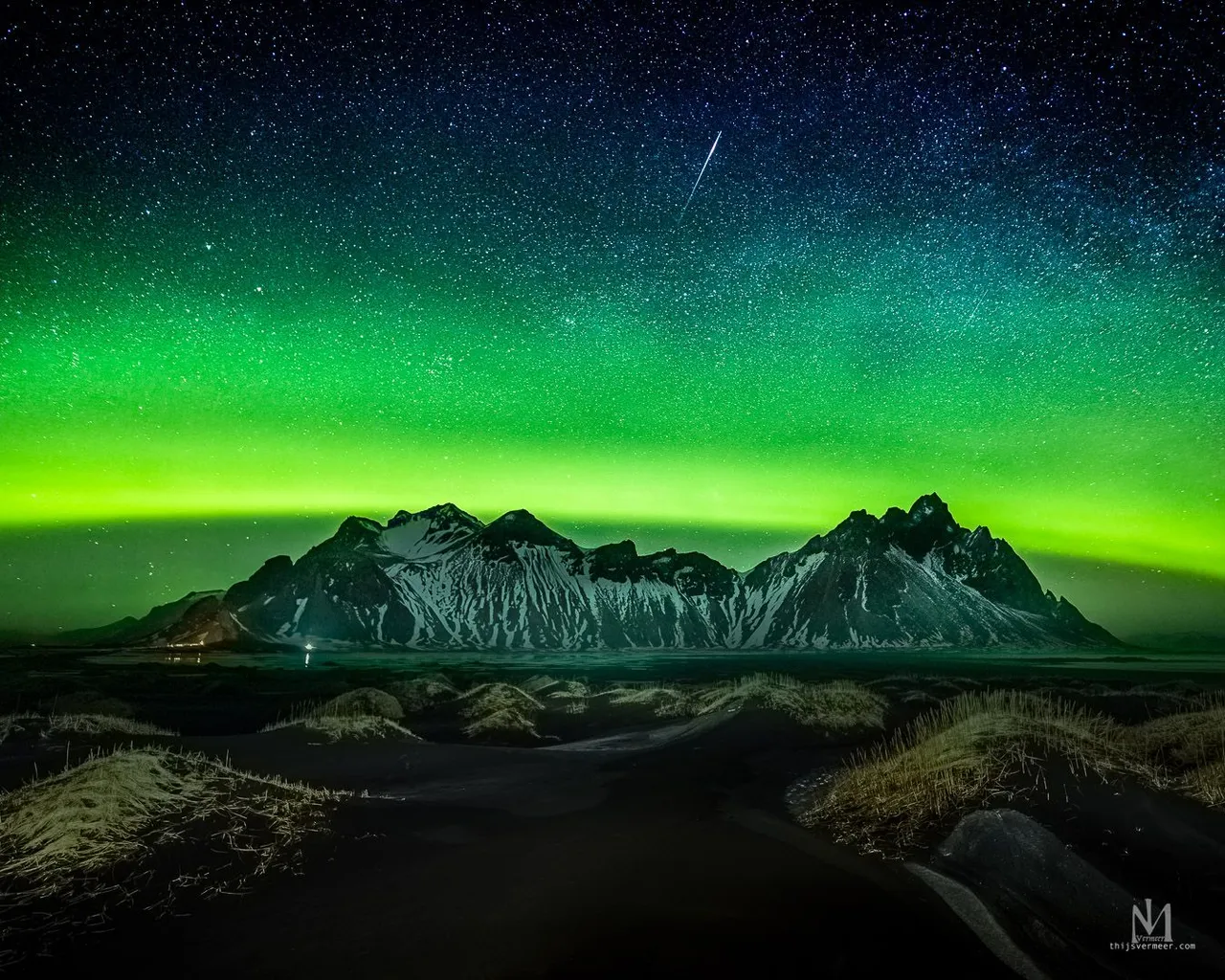
Northern lights washed out, and a meteorite passing by. (30sec shot)
Like any other moving subject in regards to photography, norther lights get washed out or get blurred depending on the shutter speed. And most likely, you want to prevent that in order to capture its structures and shapes. Depending on how the lights behave, dancing rapidly or just slowly curling around, you choose the best matching shutter speed. Probably in the 5 to 10sec range. Therefore norther lights photography is a continuous balance between shutter speed and ISO settings.
Some examples:
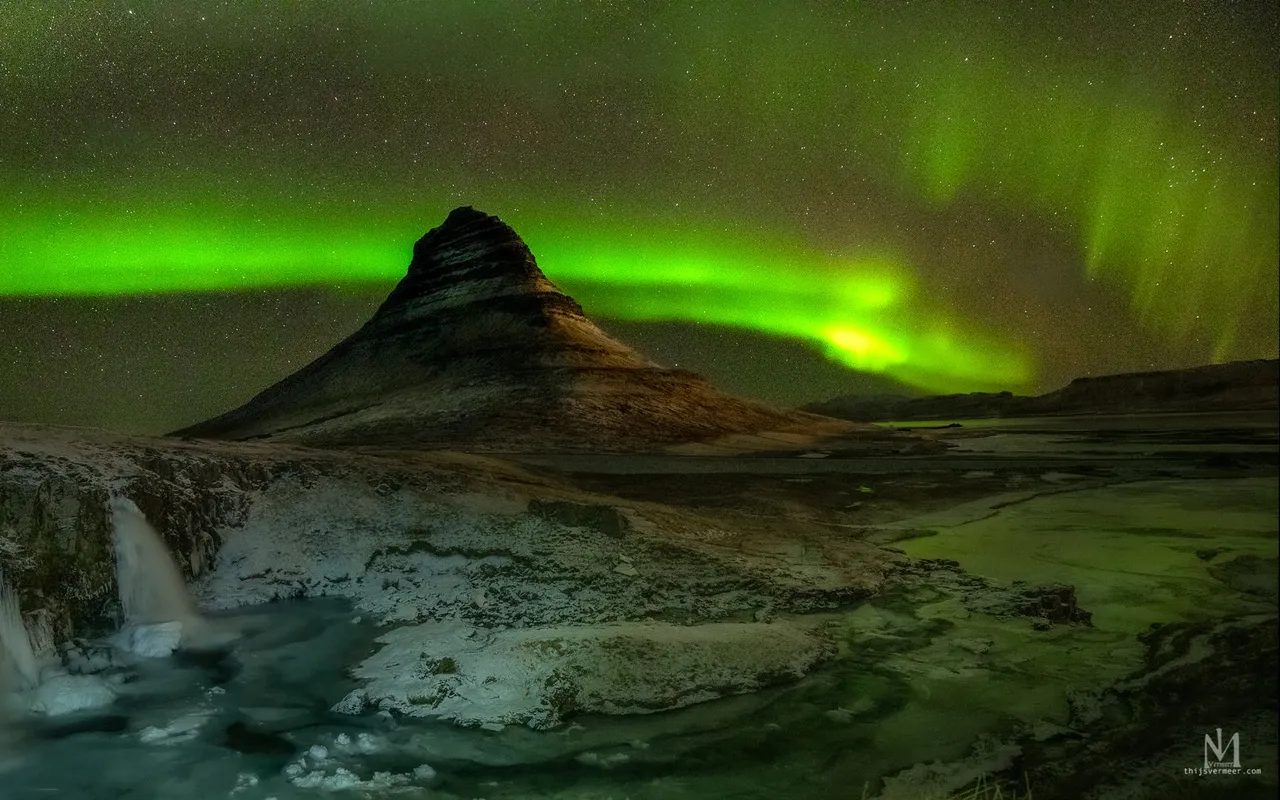
Shorter shutter speed, more structure in the light. (bad composition)
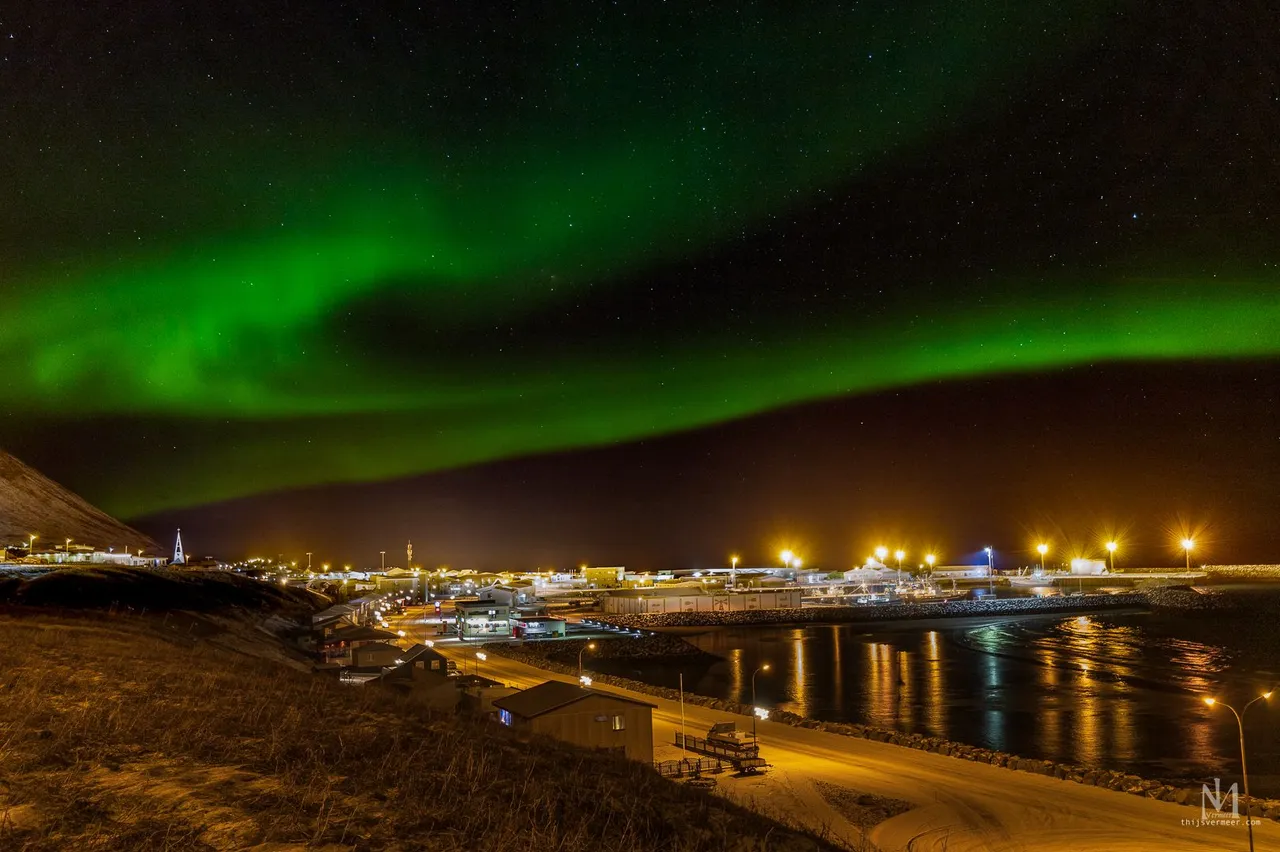
Shorter shutter speed, more structures in the light.
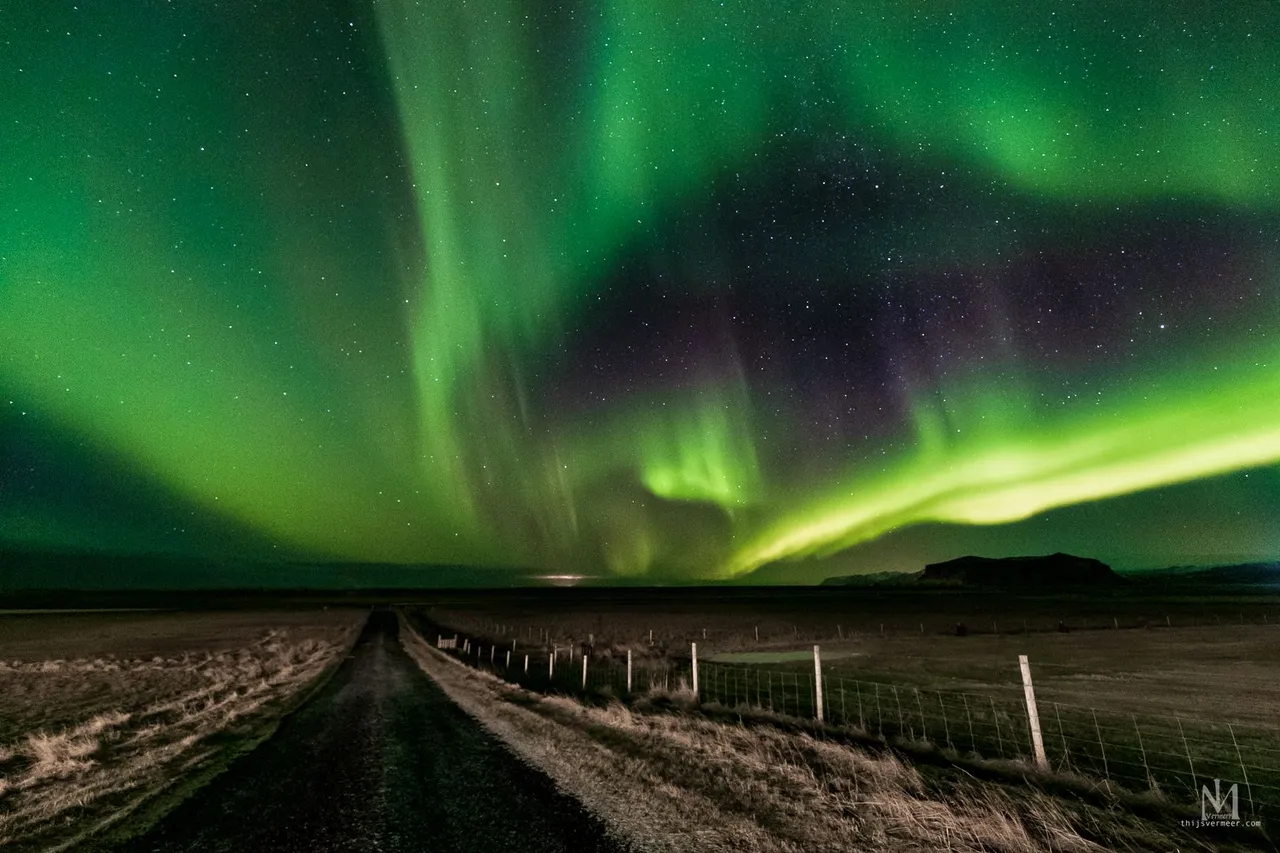
Even shorter, 4 sec, shutter speed even more structures in the northern lights.
Northern lights move, and the speed in which they move can change rapidly. After your basic settings are dialed in you find yourself shifting between shutter speed and ISO settings while adapting to the movement of the lights.
Lessons learned.
First and foremost if you've never seen the northern lights before and all of the sudden they appear you're probably not prepared. Watch and enjoy, the memory is way better than missing it all while struggling with your camera settings to end up with a boring scene and washed out lights. It happened to me the first time.
If you're going to photograph the northern lights pick and interesting scene. Something that would have worked great with an otherwise interesting sky. The sky is a key element in your photo so don't add to much else in, it will be a distraction. (like I did) I added a waterfall and an mountain and also northern lights, but almost no sky, not helping the viewer where to look for.
and least but not last, you have to have some luck too. It's hard to predict the northern lights and also know if you have a clear sky on the location you like to shoot. Like the picture that was published. It was just outside my cabin and I had not planned anything at all. It was cloudy and the wind was so strong that I had to use both hands to close my cabin door.
When by coincidence I went outside I saw the clouds were lighting up from very strong northern lights behind them. I got my camera and walked to the closest subject I could find. That crater mountain. I tried a few settings but the clouds were to heavy until suddenly a gap in the clouds appeared and I had to guess if the settings were right. I had just one opportunity and it worked out well. So sometimes a little bit of luck can make all the difference.
I hope you've learned something from this post and/or enjoyed reading it.
Cheers,
Thijs
